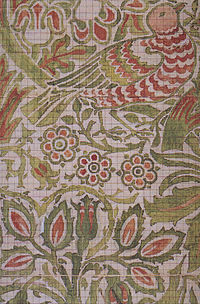
Photo from wikipedia
Abstract A growing demand from urban planning services and various research thematics concerns urban fabric characterization. Several projects (such as WUDAPT) are currently lead in the urban climate field to… Click to show full abstract
Abstract A growing demand from urban planning services and various research thematics concerns urban fabric characterization. Several projects (such as WUDAPT) are currently lead in the urban climate field to answer this demand. However there is currently a need to propose standardized methods to calculate urban indicators and to automatically classify the urban fabric for any city in the world as well as to propose platforms to share these methods and the associated results. Our contribution answers partially to this challenge. A total of 64 standardized urban morphological indicators are calculated for three scales of analysis: building, block and a reference spatial unit (RSU). A supervised classification is performed for the building and the RSU scales using a regression trees model based on these indicators and on 10 urban fabric typological classes defined by urbanists and architects. A processing chain is proposed to realize indicator calculation and urban fabric classification for any french municipality according to reference data provided by the French National Geographical Institute (IGN). Spatial reasoning and morphological indicators description are formalized with SQL language and statistical analysis is carried out with R language. Finally a geoprocessing framework based on free and open source softwares, conform to the Open Geospatial Consortium (OGC) standards and ready to serve open data is built. Indicators values and classification results for 6% of the french municipalities (corresponding to 41% of all french buildings) are available through a web cartographic portal by any person interested in such analysis.
Journal Title: urban climate
Year Published: 2018
Link to full text (if available)
Share on Social Media: Sign Up to like & get
recommendations!